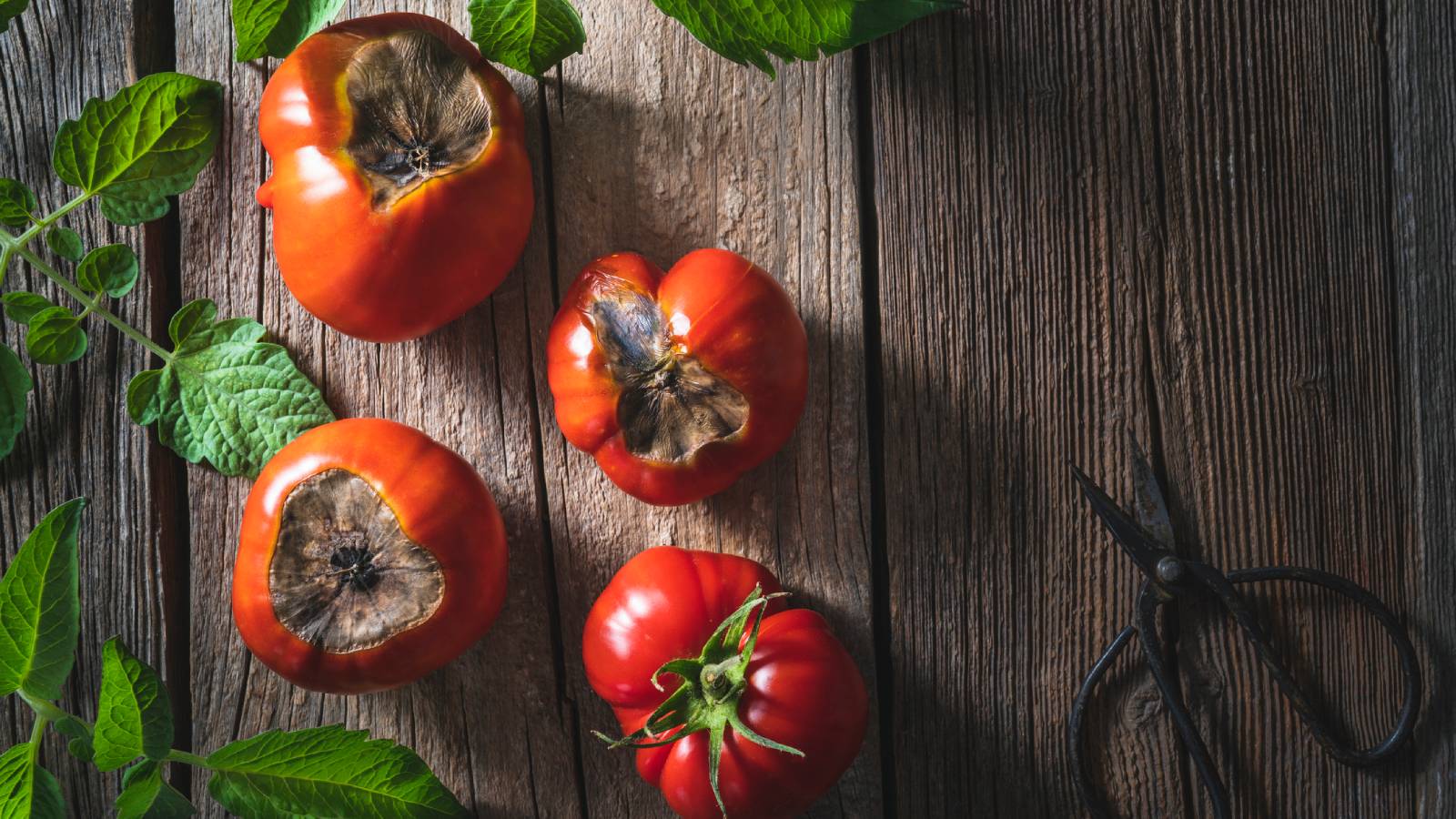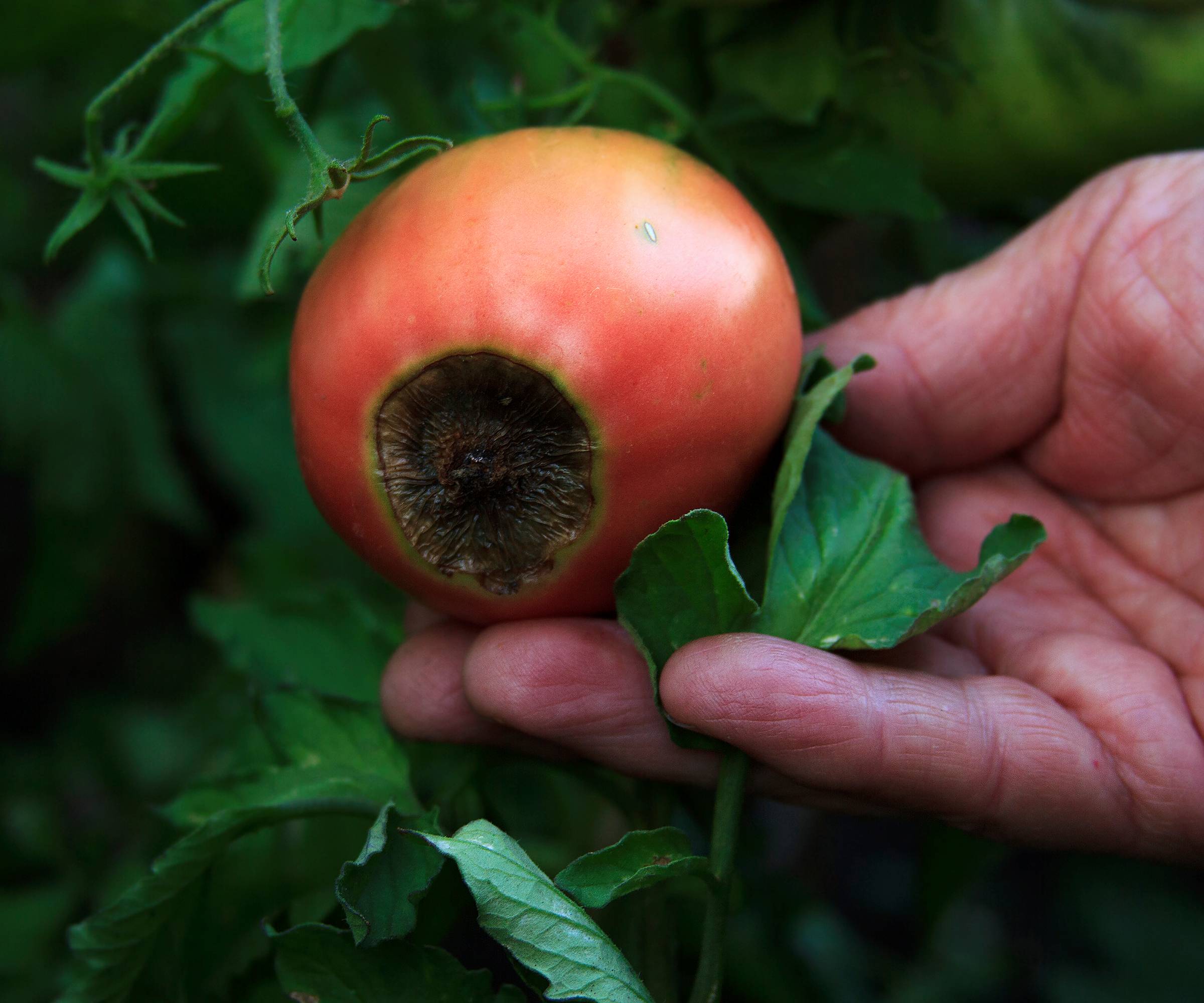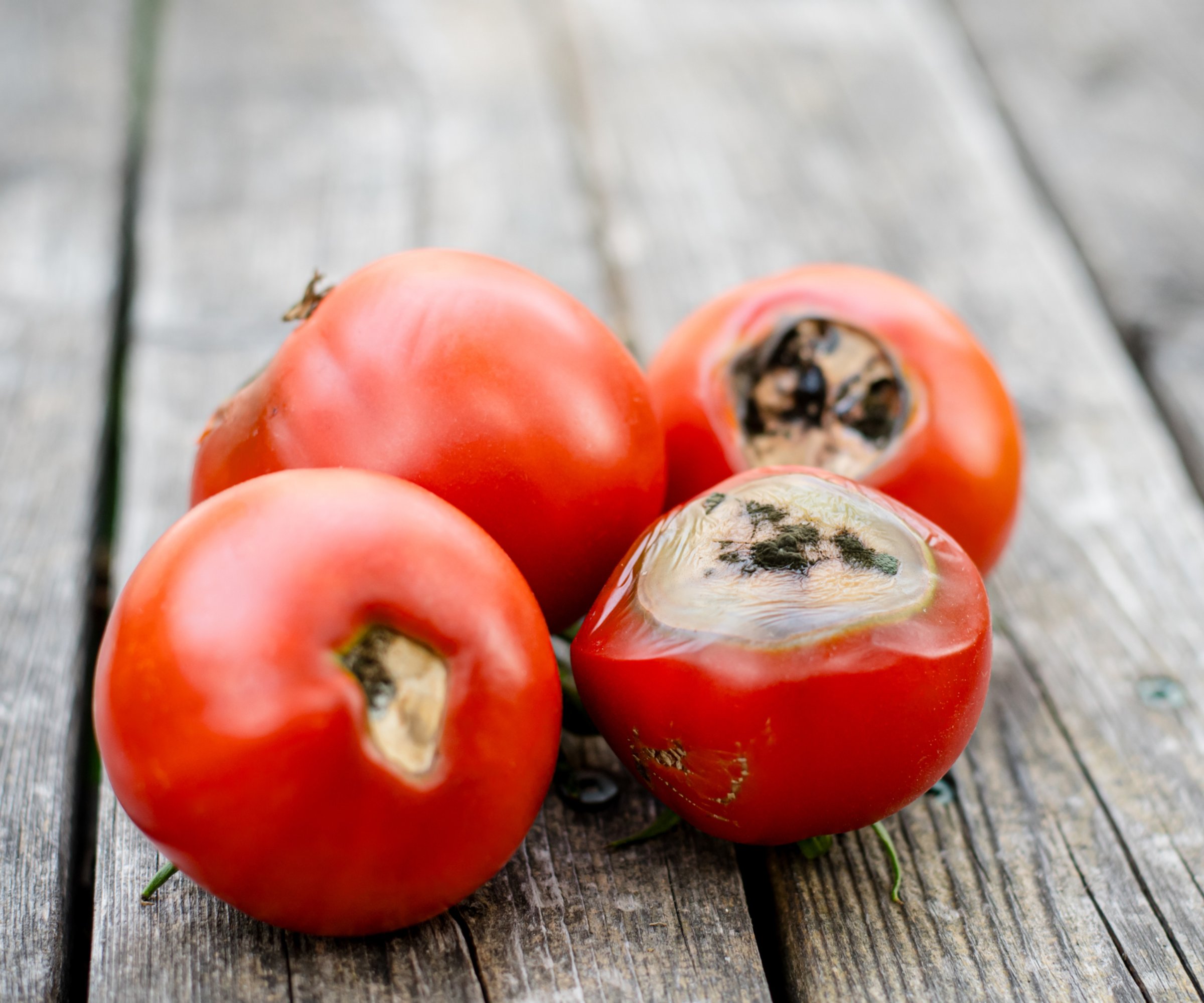Tomato Blossom End Rot Symptoms and Treatment
Got strange, dark spots on the bottoms of your tomatoes? It might be blossom end rot. We'll tell you how to spot it and get rid of it.


A fresh tomato is one of the best rewards you can get as a gardener. That's why it's so disappointing to check on your once-beautiful crop to see a bruised-looking splotch on the blossom part of the tomato.
Blossom end rot in tomatoes (also known as BER) is a common problem for gardeners who are growing tomatoes. Its cause lies in a plant’s inability to absorb enough calcium to reach the fruit. Other vegetables like bell peppers, eggplant, and squash can be subject to blossom rot as well.
Blossom end rot can be a signal that there's not enough available calcium in the soil. Even if the soil has sufficient calcium, the tomatoes themselves may have been subjected to conditions that block their ability to uptake it. Fortunately, preventing tomato blossom end rot is possible.
Tomato Plants with Blossom End Rot

When a tomato plant is flowering well, tiny fruits begin to form. The leaves may be healthy, plentiful, and green. On the outside, it looks like the plant is vigorous and a bountiful harvest is on the way. But during formation of the fruit, small imperfections can begin to show up. Blossom end rot in tomato plants starts small, but can end up ruining the fruit.
There are both internal and external tomato blossom end rots. In the external form, the lesions are easy to observe. With internal BER, however, you might not notice until you're about to eat it.
Blossom End Rot Symptoms
Tomato blossom end rot begins at the fruit’s formation stage, but the damage isn't necessarily visible to the naked eye until it begins to mature. Typically, the problem starts during the first flush of fruits, and on those that haven’t quite reached their full size. The spot appears irregular, watery, and tan or yellowish-brown, and will grow until it destroys much of the fruit.
BER usually shows up at the blossom end of the fruit (hence the name), but it can occasionally occur on the sides. Lesions that occur on the sides look similar to tomato sunscald.
Sign up for the Gardening Know How newsletter today and receive a free copy of our e-book "How to Grow Delicious Tomatoes".
Over time the lesion will spread, turning darker and eventually black, while the flesh will soften and the tomato's skin will get leathery. In essence, the tomato begins to rot at the end.
To make matter worse, the lesion may become infected with black mold. This common tomato disease makes the fruit unpalatable and also affects its appearance.
What Causes A Tomato Bottom to Rot?
Blossom end rot can be a physiological problem or can be caused by unfavorable conditions such as freezing or drought. In either case, the culprit is most often a lack of calcium, either in the soil or due to the plant’s inability to take it up.
Calcium is responsible for strengthening cell walls and shoring up the tomato’s skin. When the tissues at the blossom end of the fruit malform, it allows pathogens to enter. Plants with accelerated, lush leafy growth seem to be most susceptible.
Other influences and stressors, such as drought or damage to the roots, can also interfere with a plant’s ability to uptake calcium. These stressors damage the cell membranes, resulting in the rot at the placental end of the fruit.
High temperatures and excessive sunlight are also contributors to BER in tomato plants. Calcium is transported up from the roots to the fruit by water, so if you’ve had a dry spell or haven’t sufficiently or consistently watered your tomatoes, you may see this condition develop.
How to Treat Tomato Blossom End Rot
A soil test prior to planting can prevent blossom end rot by indicating low levels of calcium. The test will also indicate high levels of ammonium and potassium, which compete with calcium for uptake. You can get a soil test kit from Amazon. Here are some more tips:
- Wait until your soil warms to 70 degrees F (21 C) before planting new tomatoes
- Use lime added to the soil 2 months before planting to provide a soil pH of 6 to 6.5, like this garden lime from Ace Hardware.
- Avoid excess fertilizing, especially early in the plant’s development.
- Use fertilizer with a low nitrogen count such as 4-12-4 or 5-20-5, like this option from Home Depot.
- Consistent watering is key. As your tomatoes grow, make sure they’re getting a full inch (2.5 cm) of water each week, whether it’s from irrigation or rainfall.
- Place some organic mulch around the plants to retain moisture. Mulch is available at Home Depot.
- Drench the soil around the roots with calcium nitrate or calcium chloride diluted with water. You can get this fertilizer specifically designed for blossom end rot on Amazon.
More Blossom End Rot Tips

Never water from above, but always water tomatoes at ground level.
Overwatering can lead to root rot. Likewise, if the plants’ roots get dry or crowded by others, they won’t do their job of carrying up sufficient calcium.
Fruits afflicted with blossom end rot should be removed and discarded. Tomato blossom end rot will usually affect the first round or two of fruits. Although blossom end rot can leave the plant vulnerable to disease, it isn't a contagious condition, and it won’t travel among the fruits. So unless you find you have a severe calcium deficiency, there’s no need for sprays or fungicides. Removing the affected fruit and continuing with a consistent watering schedule may very well clear the problem for the fruits that follow.
If you do find your soil is truly lacking in calcium, you can add a bit of lime or gypsum to the soil or use a foliar spray to help the leaves take up calcium. You can find garden lime at Ace Hardware. If you have an otherwise lovely tomato that’s rotten on the bottom, cut the rotted part away and eat the rest.
Heirloom varieties seem more prone to developing blossom end rot. Plum and pear shaped tomatoes are also more susceptible. Some varieties that are resistant to BER include Mountain Fresh, Mountain Spring, and Mountain Delight. Several varieties of heirloom tomato seeds are available at Burpee.
Looking for additional tips on growing perfect tomatoes? Download our FREE Tomato Growing Guide and learn how to grow delicious tomatoes.

Caroline Bloomfield is Manager of Marketing Communications at Gardening Know How since 2019. A northwest native, she has resided and gardened in multiple zones in the U.S. and is currently at home in Bandon, Oregon. Writing and editing for various publications since 1998, her BA in American Studies from Southern Maine University includes an emphasis in English. She was raised in California by avid gardeners and continues to enjoy the natural world with an appreciation for the concepts of sustainability and organic care for the planet.
- Bonnie L. GrantWriter
- Amy DraissDigital Community Manager